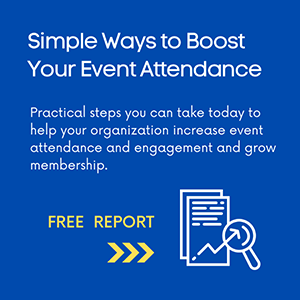
Calculating the true cost of publishing an association newsletter or magazine
By Steve Milano,
Many trade associations don’t correctly calculate their newsletter or magazine costs, leading to a variety of bad financial decisions throughout the year, or an incorrect bottom-line picture of the publication’s annual performance.
Using a number of simple best practices for publishing, trade associations can take more control of their publication finances, make better decisions regarding editorial, circulation and promotions, and reduce the cost of publishing.
Who knows the numbers?
Your bookkeeper, accountant or CFO should be able to tell you what it costs to publish one page of your publication. She should know what it costs to add a signature if you sell an extra ad or two. She should be able to quickly tell you what it costs to add color to a four- or eight-page signature. At the very least, someone in the publications department (probably your designer or creative director) should know these numbers and be able to share them with your editor, CFO or sales manager when asked.
Are you a profit center or expense?
The first step in creating a financial plan for an association newsletter or magazine is to decide whether it should be a profit center, break-even endeavor or expense to the association. While a publication may cost more to publish than the amount of advertising it sells, it can help the association generate revenue across all of its other departments, or simply serve as an expense that helps the association meet its mission.
An executive director should be prepared to inform his board about how a publication generates revenue beyond advertising sales, such as increasing annual conference attendance, boosting continuing education signups, generating more trade show booth sales, and increasing membership retention.
Creating a master budget
It’s not that difficult to create the optimal and most useful budget for your publication, and to create formulas that help you quickly determine how much money you can spend each issue. Start with a simple listing of your production and overhead expenses.
Production expenses
Production expenses are those that occur each time you print and mail an issue of your publication, such as, printing, postage and mailing services.
•Printing
•Postage
•Mailing services
•Purchased Editorial
•Purchased Photography/Art/Illustrations
Overhead expenses
Your overhead costs are those you incur each month whether or not you publish an issue that month. Some are direct overhead costs (such as a magazine editor’s salary), while some are indirect (such as the association’s electric bill). Overhead expenses include items such as:
Direct expenses
•Labor*
Editors, creative director/graphic designer, IT staff, sales reps
•Sales Materials
•Travel
•Gifts
•Misc. Mktg./Adv./Proms.
•Misc. Postage and Shipping
•Audits
•Website costs
•Meals & Entertainment
*Includes salary, wages, bonuses, commissions, contractor fees, payroll taxes, benefits, insurance and furniture and equipment costs.
Indirect expenses
This is the percentage of the association’s rent, accounting, IT, phones, insurance, ISP, copy machine lease, etc. apportioned to magazine. You can download a copy of an Excel spreadsheet using the links below, which will allow you to fill in your own publication’s numbers.
Magazine budget with no formulas in the Excel document
http://magmakeovers.com/wp-content/uploads/2017/06/MagazineBudget.xls
Magazine budget with formulas and sample numbers in the Excel document
http://magmakeovers.com/wp-content/uploads/2017/06/MagazineBudgetWCellCalcs.xls
Your financial manager should be able to provide all of your publishing expense numbers, but may need help with a list of the direct production and overhead expense categories.
Calculating page costs
What does it cost you to print and mail one page of your magazine? To find out, simply take your total expenses per issue (including production and overhead costs) and divide them by the number of pages in your publication.
If it costs $50,000 to put out an issue of your publication and your publication is 36 pages, your cost per page to publish is 50,000/36 = $1,388 per page. Don’t forget to add two months’ worth of overhead costs to bi-monthly issues, and three months’ worth of overhead costs to quarterly issues.
The $1,388 figure is not your cost to add pages, since that page figure includes overhead. For example, if you’re thinking about adding a four-page signature, use only your production costs to determine your extra expense to add a four-page sig. Don’t add $1,388 X 4 to get the cost of adding four pages. Add the hard cost of adding a four-page signature, then add that to $50,000, then divide that number by 40 pages.
Work with your financial manager, printer, mailing house and postmaster to learn all of your publishing costs so you can create charts and reference numbers you can use to quickly determine what it will cost you to add four pages, based on your current number of pages.
Knowing your page cost is critical for setting advertising rates.
Should you take the last-minute ad?
Your sales department might have an opportunity to sell one or two more ads that require you to add a signature to your magazine. To decide what it will cost you to take that ad (and whether or not you’ll make a profit doing so), you must know the printing and (possibly) extra mailing costs for that.
For example, your salesperson says, “I know we’re close to deadline with this issue, but I can sell a full-page and a half-page ad for $6,000.”
The designer says, “We’ll need to add another four-page signature or drop a house ad or some editorial.” The editor says, “We can’t drop anything, so we’ll have to add another four-page signature. But, we’ll need to figure out what to put on those other 2.5 pages that won’t have ads.”
Before you make the decision to add the four-page signature, you need to know if you’ll make or lose money on the deal. You will also need to determine whether or not the association pays taxes on the advertising, based on whether it’s unrelated business income of not.
You might lose money by taking those two ads, but it might be worth it if you keep those two advertisers (who buy ads year round, take booths at your trade show, provide expert writers and speakers, sponsor association events and serve on your committees or advisory board) happy.
The cost of adding pages
What does it cost to add a four-page signature to a publication?
•The printing cost
•The designer’s time
•The editorial staff time (freelancer?)
•The postage cost
The printing cost
If your current issue is 36 pages, you’ll print it using two 16-page signatures and a four-page signature for your covers. If you need to add a four-page signature to run the two new ads your sales manager just sold, you’ll now print have to print two 16-page signatures and one eight-page signature, which is cheaper than running two four-page sigs. If your cover paper is heavier than your editorial pages, then you can’t run an eight-page sig. You’ll need to run two sixteens and two fours.
On the other hand, if your current publication size (before the new four-page sig you’re considering) is 44 pages, you’re printing two 16-page sigs, an eight-page sig, and a four-page sig. In this case, adding four pages to this publication will be cheaper than if you add it to a 36-page publication, because now you’re going to 48 pages, and you can print three 16-page sigs (unless you use different stock for your cover).
Your new signatures might also affect where you can and can’t place color on pages.
If this sounds confusing, that’s why you want to determine your printing costs by signature and have a handy reference document, so that any time you’re considering adding or deleting pages, you can quickly determine the cost with a handy-dandy chart you have.
The designer’s time
When you add pages, you have more design time. If you’re using a contractor, you need to figure out how much she’ll charge you to lay out four more pages. If you’re using an in-house designer, you need to determine if she has time and what other projects might need to go on the backburner.
The editorial staff time
If you add two pages of advertising, you might have to generate two more pages of editorial. What will that cost you?
The postage cost
You also need to know how your postal rates work, based on what your mailing classification is. Do you mail first-class or bulk? If you add four more pages, what will that do to the weight of the publication, and will that affect your mailing costs? Work with your mailing house and post office to determine what the different page numbers are that affect your mailing costs. For example, it might not change your mailing rate, in terms of weight, to go from 32 pages to 36 pages, but going from 36 pages to 40 pages might bump your weight up to the next postage level.
Remember your ad/edit ratio
Depending on your postal rate classification, you might need to keep your ratio of advertising pages to editorial pages at 50/50 to qualify for your nonprofit rate. If you add a four-page signature and three pages of it is advertising, that might tip you over your allowable ad/edit ratio. You might be able to solve this problem by dropping one or two house ads and including some evergreen editorial you have on hand.
Do you ‘bill’ your meetings, membership and education departments?
How many pages of editorial or house ads do you publish each year to promote your annual meeting, trade show and seminars? Do you promote your webinars, eLearning courses or continuing education seminars, lunch-and-learns and workshops in your publication? What about the number of house ads or articles that promote membership or renewal?
It costs you money each time you print and mail those pages. Do you charge these costs to your various departments? For example, if you run pre-conference and post-conference issues of your publication, you might add 10 or more pages to your magazine or newsletter. If you didn’t have an annual conference, you wouldn’t have this annual publishing expense. The same goes for house ads you run each issue for your annual meeting. If you didn’t have a newsletter or magazine, your meetings department would have to spend money buying ads, mailing postcards, purchasing banner ads on other websites and using other methods to promote the meeting.
Why would you consider the cost of those 10 pages a publications expense and not a meetings expense?
If you don’t “charge” these pages to your meetings department, those staff members might get into the habit of asking for publication pages without thinking about the cost to the association. This leads to not knowing the true cost of running an annual meeting or publishing a newsletter or magazine.
Creating a financial publishing formula
Some trade associations create publishing formulas that set the number of pages per issue based on advertising sales. For example, the association might want a 10 percent profit on each issue published. If the sales department sells $50,000 worth of advertising, the publications manager can only spend $45,000 on editorial, design, printing, publishing and overhead. Some associations run their publications on a break-even basis, while others consider a magazine or newsletter an expense, but try to limit the expense, based on revenues, if possible. Trade associations also have to take into account their target ad/edit ratios so that they don’t lose their nonprofit postage rate.
Unrelated business income and taxes
Advertising revenue is not always tax-free, even for a 501(c) tax-exempt organization. Depending on how much advertising you sell, some of it might be classified as unrelated business income, which is subject to income tax. “Unrelated business income” is an IRS term.
The IRS wants to know if the income you’re generating is directly related to your mission. If it costs $50,000 to publish each issue of your magazine or newsletter, the first $50,000 worth of advertising you sell pays for the magazine, so it relates to your mission. If you sell $70,000 worth of advertising, the extra $20,000 might be taxable. Some associations argue that they will spend the $20,000 on their mission, so it’s nontaxable income.
Discuss this situation with your financial manager to determine how much of a “profit” your magazine is actually making at the end of the year, based on whether or not you must pay income tax on some of your advertising revenue.
This comes into play when your sales director tells you she just sold two $3,000 ads. After you subtract your cost to add a signature, you don’t subtract that number from $6,000 if you pay income tax on that $6,000.
Knowledge is power
It’s important to for an association to determine its true publication costs and to share that information with the executive director, CFO and publications manager. It’s also critical to let the sales manager, other department heads, publications chair and board of directors know why you produce your newsletter or magazine the way you do, and what their individual requests for editorial coverage or ad pages will cost the association.
Milano is owner of Steve Milano & Associates, a media and strategic planning firm operating in the national association space. He also conducts magazine makeovers at Association Publication Evaluations, www.magmakovers.com. Milano also is leading the TRENDS e-learning course on “Strategic Association & Nonprofit Publishing.” The eight-module, self-paced course covers how to use the design, editorial, sales, finance, marketing and IT aspects of your association’s magazine or newsletter to help achieve your organization’s long-term strategic goals. For details, click here.


